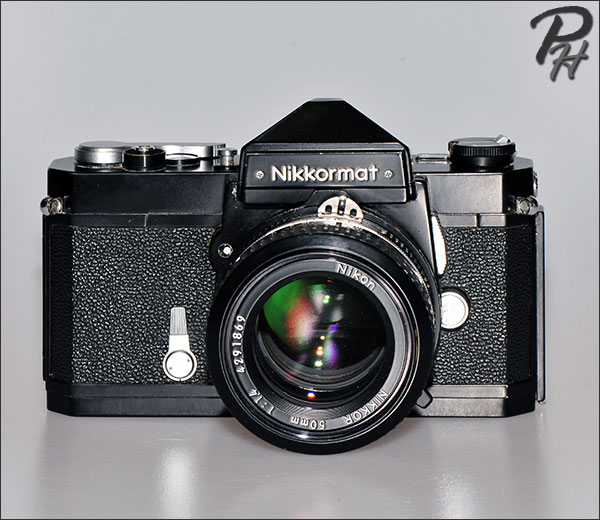Nikkormat Serial Numbers

Nikkormat (Nikomat in Japan) was a brand of cameras produced by the Japanese optics company Nippon Kogaku K. K., as a consumer version of the professional Nikon brand. Nikkormat cameras, produced from 1965 until 1978, were simpler and more affordable than Nikon-branded cameras, but accepted the same lenses as the Nikon F series cameras.
The Nikonos Story The famous French deep-sea diver, film maker and ex-French Navy captain Jean-Yves Cousteau failed several times to construct a satisfying underwater camera. The Belgian - but born in France - aviation engineer (and member of an old Belgian noble family) Jean de Wouters d´Oplinter*, however, succeeded in a camera construction that could stand the water pressure at a depth of at least 60 meter. He gave that camera the name of the research vessel of Cousteau: Calypso.
The production of the camera was taken over by a French company named Spiro-technique in Levallois-Perret (France). Nikon Corporation takes over the production rights in 1963 and starts the production of a series of underwater cameras, better known as Nikonos. The original Calypso-Phot camera was fitted with lenses of the French lens maker Berthiot; it´s obvious that Nikon designed a nice range of Nikkors for the Nikonos series. De Wouters d'Oplinter stayed some 15 months (1964/1965) in Tokyo to assist the Nikon engineers. Ricoh media card reader driver.
See for the results of his efforts below. *Jean Guy Marie Josef de Wouters d'Oplinter (1905 - 1973) has patented more than 30 inventions of which nearly 20 are inventions related to photo-cameras. Back in 1957 he designed the Calypso; that design was patented in 1960.
He often was a crew member on the Calypso, a research vessel captained by Jacques Yves Cousteau (1910 - 1997) aka Commander Cousteau, who produced dozens of movies of underwater life. Research vessel Calypso As one can see below most Nikonos bodies are identical outside, inside is a different story.

Note: all cameras, lenses and other accessories mentioned in this chapter are primarily for underwater use, although they can be used on land, too. Beware of the fact that all those equipment will sink like a stone!! Nikonos cameras don't swim!! So tie them up before diving!
After each dive check and clean all O-rings and grease them. See for how to open a body under Nikonos III.
The Nikonos I (introduced in August 1963) is in fact an improved version of the Calypso with - of course - a Nikkor lens, the W-Nikkor 2.5/3.5 cm. The camera is a camera which is put in a separate aluminum body. It has a metal shutter with a limited number of exposure times (1/30, 1/125, 1/250 and 1/500 sec.), a range finder with parallax correction and a mechanical film advance system. No internal flash nor light meter. This version was build until 1968. The serial number is engraved on the flash shoe, starting at #900001. Above the famous Calypso/Nikkor #908470 with W-Nikkor 35mm/2.5 #191076 used by James Bond in 'Operation Thunderball'.
The Nikonos II, which was introduced in May 1968, is technically identical to the Nikonos I but the whole finish is much better. Free download cartoon english movies. It has a rewind crank and a DOF scale on the lens. This camera was in production until 1975. For the German market a Nikkor-version (see above) exists as the German Zeiss-Ikon company made objections against the use of the almost identical Nikon name on the German market. Serial numbering starts at 960001. The Nikonos III is known as one of the best Nikonos of the whole series.
Ergonomics, finish and range finder (with 35 and 80mm frames) are improved. It is also the first Nikonos with a sprocket for film advancing. This camera was build between June 1975 and July 1980. Serial numbering starts at 3100001. Nikonos III By lifting/pushing on both sides of the body the strap lug lever just under the knob (see above), the entire inner body compartment can be taken out of the outer body. But before that you have to remove the lens, by lifting the lens a few millimeters (grabbing the ribbed ring) and turn it 90°, either clockwise or counterclockwise (see below). In fact the lens locks the whole camera body.